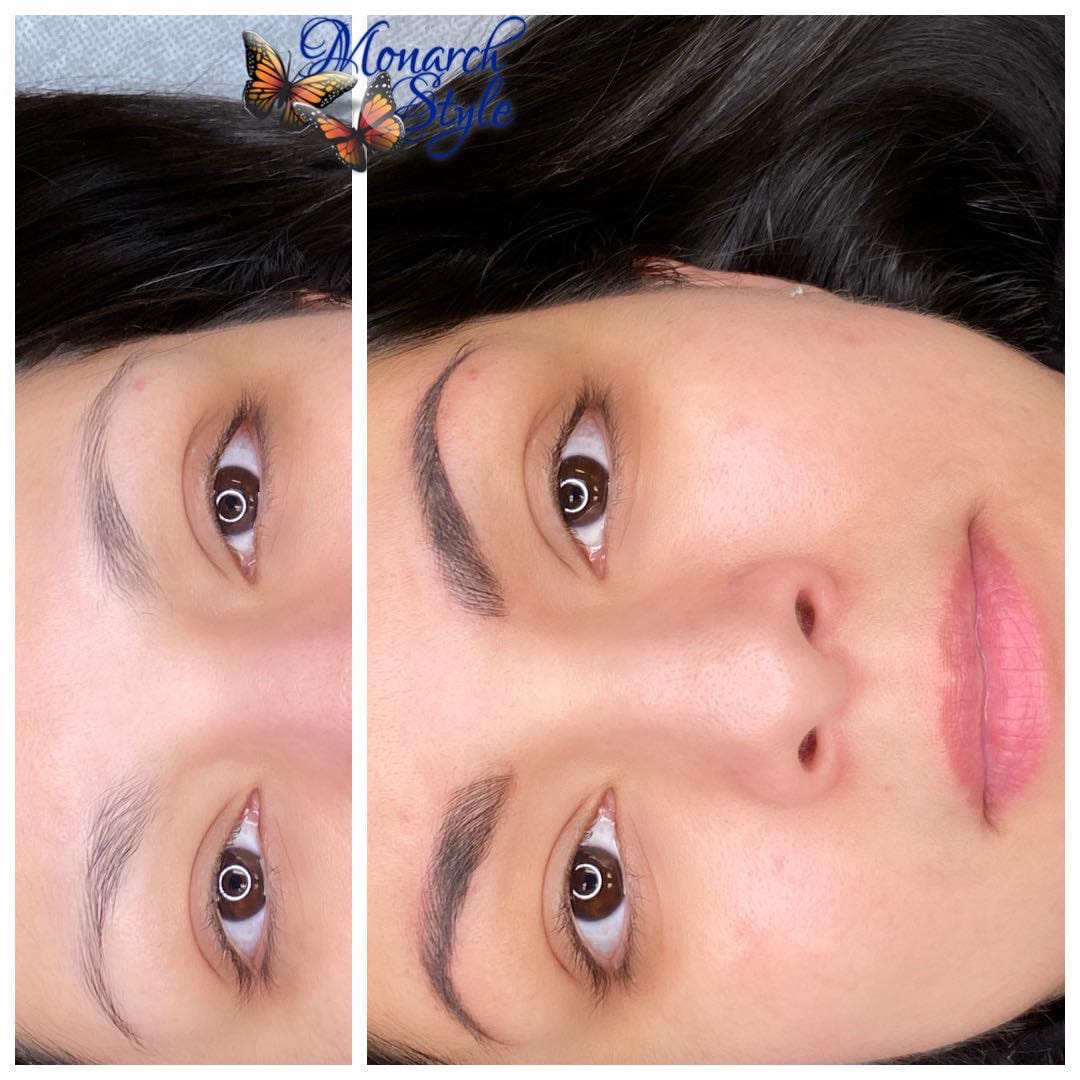


Microblading or Nano-Blading is a semi-permanent makeup procedure designed to enhance, reshape, or create a natural appearance for eyebrows. This meticulous technique employs a handheld tool to deposit pigment into the upper dermal region of the skin, producing fine, natural-looking lines that seamlessly integrate with existing eyebrow hair. The outcome can endure for up to a year, contingent on individual skin characteristics. For optimal and sustained results, a recommended Touch Up session between 6-8 weeks ensures the realization of the desired look.
Who is a good candidate for Microblading?
The suitability of a candidate for microblading extends beyond the quantity of natural brow hair and is primarily contingent on skin type. Factors such as skin reactivity, sensitivity, the presence of conditions like keratosis pilaris on the forehead, or a history of breakouts or cystic acne around the brows play a pivotal role in candidacy. Individuals experiencing heightened skin reactivity or ongoing skin conditions may not be optimal candidates at the moment. The initial inflammation caused by microblading can potentially exacerbate existing skin conditions and impact the healing process of the tattoo.
Additionally, individuals with very oily skin should be mindful, as oiliness can contribute to a faster fading of the microblading. In such cases, the longevity of the microbladed brows may be compromised, emphasizing the importance of considering one's skin type in determining candidacy for this procedure.
How long does Microblading last?
The longevity of microblading varies, spanning one to three years, with the specific duration influenced by individual skin types. Aava notes that oilier skin types typically experience faster fading. Within the first year, some fading may occur, but it is unlikely for the microblading to completely disappear. As the three-year mark approaches, the microblading is expected to be nearly untraceable.
To maintain a consistently fresh appearance, regular touch-ups every 12-18 months are recommended. These touch-ups play a crucial role in preserving the vibrancy and definition of microbladed brows over the years, ensuring a lasting and refined look.
How painful is eyebrow Microblading?
Microblading, while potentially causing some discomfort, is a subjective experience influenced by individual pain tolerance. Fortunately, to mitigate any potential discomfort, your brow artist will generously apply a numbing gel before commencement, often adding extra layers between each pass. Microblading is similar to tweezing your brows or a cat scratch. In essence, anticipate a level of discomfort, but one that is generally described as manageable and far from unbearable.
How do I prepare for a Microblading appointment?
Prior to your microblading appointment, refrain from brow grooming for 6-8 weeks before the appointment to allow for a comprehensive reshaping alongside the microblading process. Additionally, it's crucial to discontinue the use of retinol, chemical exfoliants, and physical exfoliators at least one week prior to microblading to prevent heightened skin sensitivity.
To ensure optimal conditions for the procedure, abstain from aspirin or vitamin E intake for 48 hours beforehand, and avoid consuming caffeine or coffee on the day of your appointment. If you are currently on antibiotics, it's essential to wait 14 days after your final dose before undergoing microblading, as antibiotics can potentially alter the pigment color during the healing process.
After-Care for Microblading
Aftercare for the treated skin post-microblading mirrors traditional tattoo care with a slightly more intensive approach. Following the procedure, the pigment will initially appear dark, accompanied by redness and sensitivity due to the use of needles cutting into the skin.
Approximately two hours post-microblading, it is recommended to gently run a cotton swab dipped in sterilized water over the area to eliminate excess dye and maintain sterility. The healing process spans 7 to 14 days, during which the skin gradually recovers, and the pigment fades to its intended shade.
To ensure optimal healing and preserve the microblading results, adhere to the following aftercare steps:
After the skin is fully healed, safeguard your microblading investment by implementing ongoing skincare practices. Applying sunscreen to the microbladed area is recommended to help prevent fading and maintain the longevity of the results.